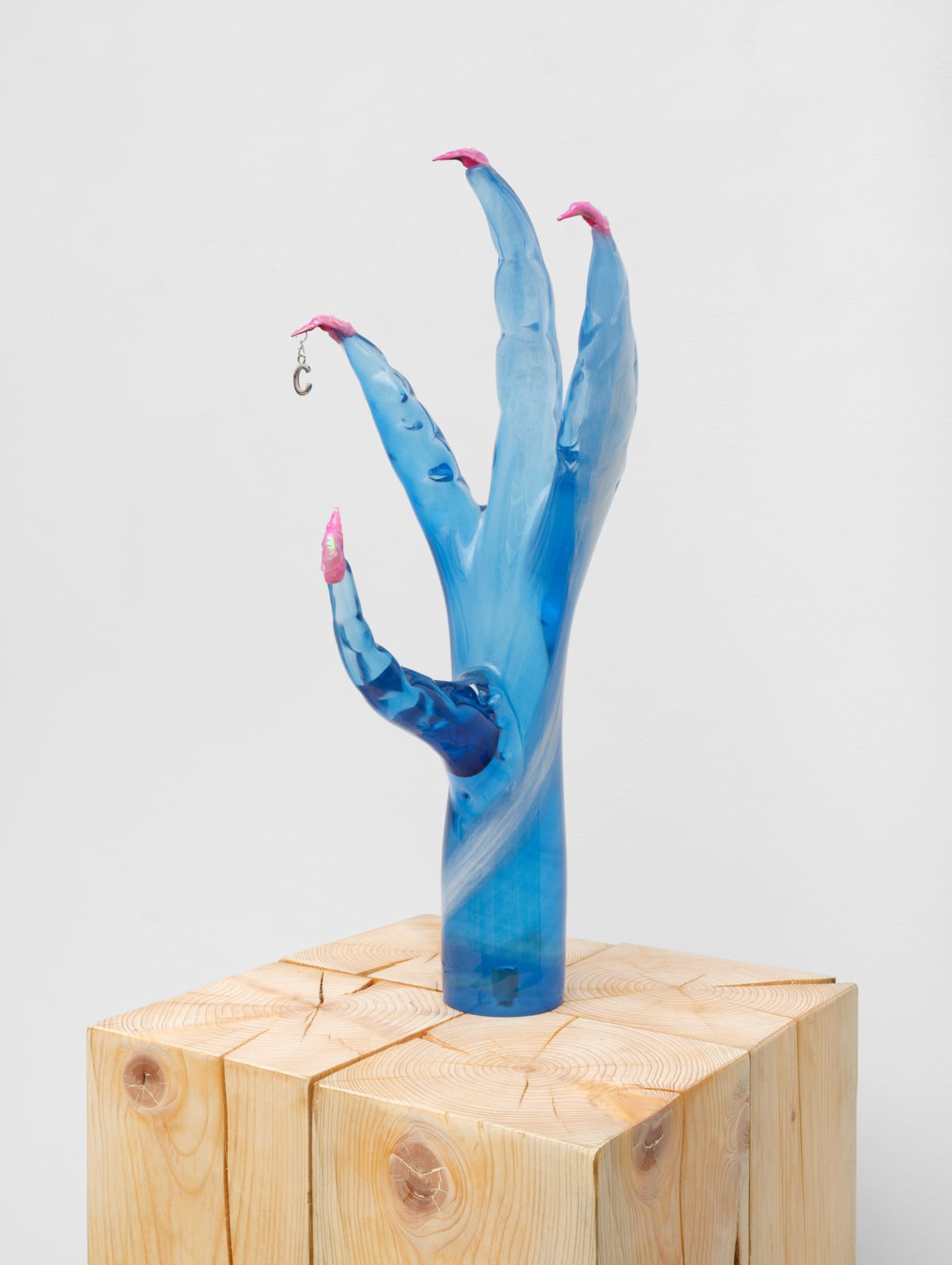Slavs and Tatars
Stilettos, 2024
hand-blown glass, faux nails
60 x 30 x 25 cm
23 5/8 x 11 3/4 x 9 7/8 in
unique
23 5/8 x 11 3/4 x 9 7/8 in
unique
Further images
Slavs and Tatars’ latest body of work revisits Marcel Broodthaers’ seminal institutional critique, Musée d’Art Moderne: Département des Aigles, 1968. The artists appropriate the eagle and its attributes—described by Broodthaers...
Slavs and Tatars’ latest body of work revisits Marcel Broodthaers’ seminal institutional critique, Musée d’Art Moderne: Département des Aigles, 1968. The artists appropriate the eagle and its attributes—described by Broodthaers as ‘Greatness, authority, power. Spirit of conquest. Imperialism’—and its association with masculinity, contrasting it with the Persianate Simurgh, which is characterized as female, wise, and spiritual. The Simurgh appears across a vast region often overlooked in Western art historical canons, such as Eastern Europe, the Caucasus, and Central Asia. By incorporating the Simurgh and its ‘flamboyance,’ the artists enable a queering of the eagle’s traditional connotations. In their new work cycle, Musée d’Art Moderne: Département de Simurgh, Slavs and Tatars explore how faith can be wielded as power. While the eagle symbolizes nationalism and empire, the Simurgh is intended to unlock the senses and the dominion of the otherworldly. The mythical bird, representing all-knowing wisdom and life, highlights issues that have become increasingly fragile in recent years with the rise of disinformation, artificial intelligence, and environmental disaster.










